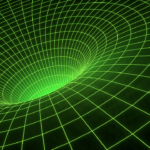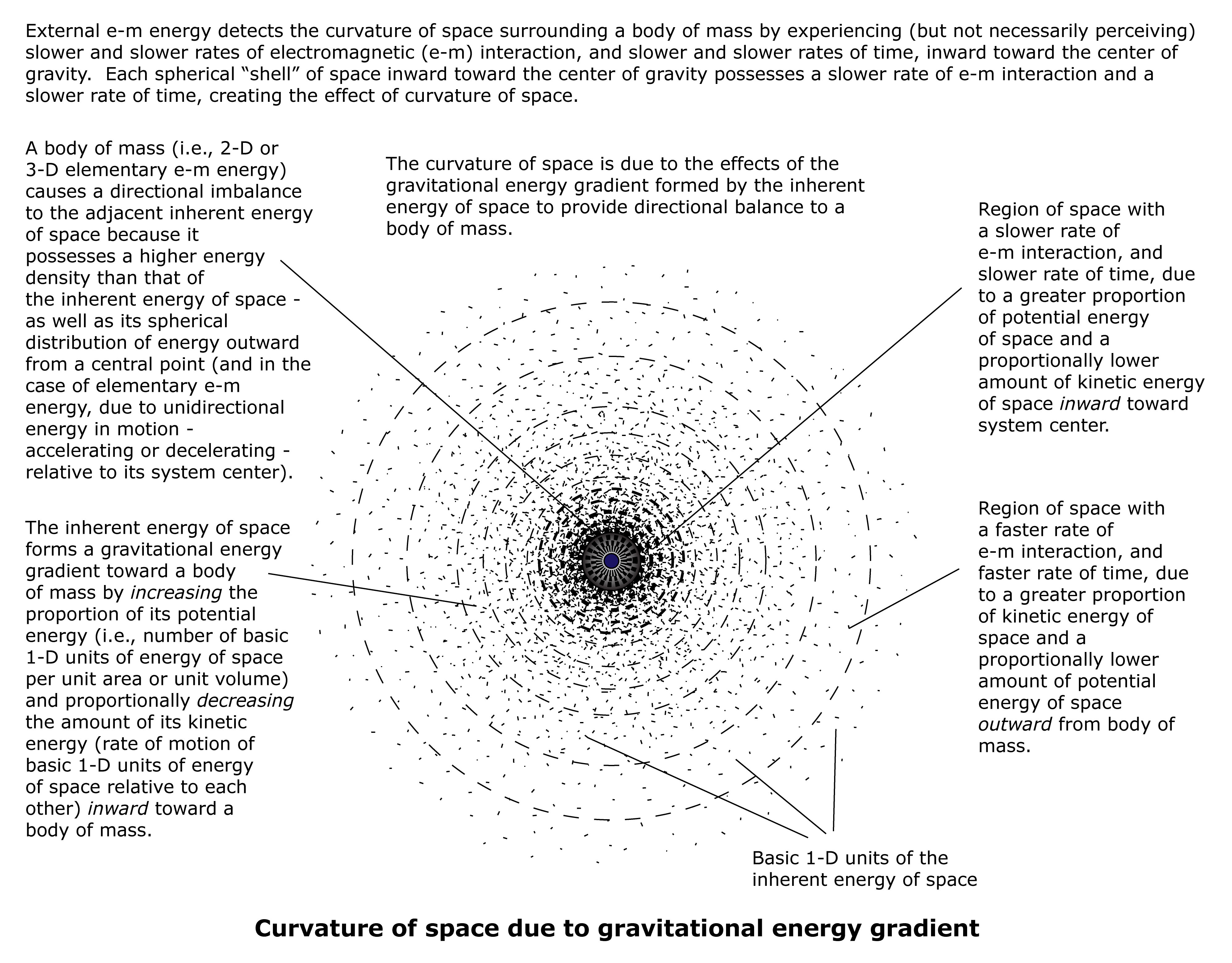 In this model, the curvature of space is due to the varying ratio of the amount of potential energy of space to the amount of kinetic energy of space approaching a body of mass.
In this model, the curvature of space is due to the varying ratio of the amount of potential energy of space to the amount of kinetic energy of space approaching a body of mass.
A body of mass (including 2-D and 3-D elementary particles) creates an energy imbalance relative to adjacent space due to a differential in energy density, or due to motion (acceleration or deceleration) of energy relative to its system center. To provide directional balance to a body of mass, the inherent energy of space increases its potential energy (the number of basic 1-D units of space per unit area or unit volume) and proportionally decreases its kinetic energy (the rate of motion of basic 1-D units of space relative to each other) nearer and nearer to the center of gravity of a body of mass.
As the potential energy of space increases toward a body of mass, the rate of e-m interaction, or rate of time, slows down. The result is a gravitational energy gradient consisting of a higher rate of e-m interaction or faster rate of time further from the body of mass, with a decreasing rate of e-m interaction or slower rate of time closer and closer to the body of mass.
The properties of the energy of space essentially create curved space surrounding a body of mass. Each spherical radius level (”shell”) of space surrounding a body of mass possesses a different rate of e-m interaction, or rate of time. External e-m energy will detect this curvature by experiencing the differential in rate of e-m interaction, or rate of time, within a gravitational energy gradient.
(Since time is produced in electromagnetic interactions, when a gravitational energy gradient is so strong that rate of time = 0 (as it is at the event horizon of a black hole), this means that electromagnetic interactions are not occurring. If e-m energy is not active, what form of unidirectional energy exists in such a region to provide directional balance? Only directionally opposing gravitational energy gradients interacting with each other?)
